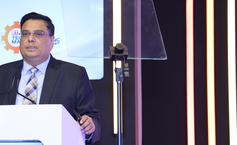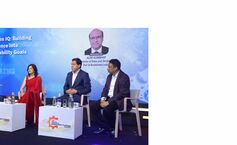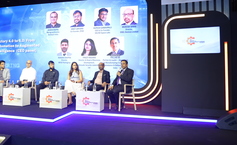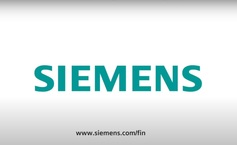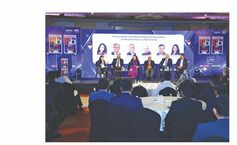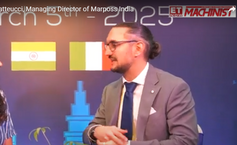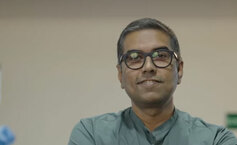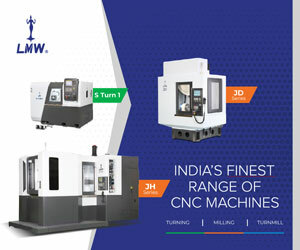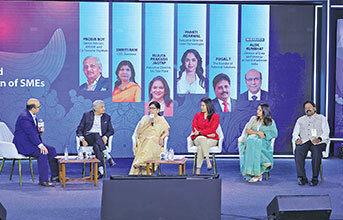
With nearly 90% of global businesses falling under the SME category, their contribution ranges from 40% of GDP in developing nations to 60% in developed ones. In India, while SMEs form the majority with 40 million enterprises, their GDP share remains at 30%, pointing to a massive untapped potential.
The next leap—from 30% to 50%—will rely on improved access to finance and the adoption of digital tools. With government support and an evolving fintech landscape, new-age solutions are bridging gaps in credit access and operational agility.
A panel discussion titled 'Financing and Modernisation of SMEs' was organised at the Festival of Manufacturing in Mumbai, which brought together seasoned entrepreneurs and fintech experts to share their perspectives on how SMEs can power India's transformation.
The panel comprised of experts like Probir Roy, Senior Advisor, WASME and Co-Founder PayMate, Smriti Ram, CEO, Sanmour, Rujuta Prakash Jagtap, Executive Director, SAJ Test Plant, Pankti Agarwal, Executive Director, Laser Technologies, and Pugal T the founder of Potential Solutions. It was moderated by Alok Kumbhat, Director of Data and Strategy at Dun & Bradstreet India.
"MSMEs are often spoken of as the backbone of India's economy — and for good reason. They power a large part of our exports, create millions of jobs, and are vital to India's economic fabric. Yet, despite years of discussion, their biggest pain point — access to credit — remains largely unresolved." said Prabir Roy.
He pointed out that while several schemes have been launched in recent years to improve financial inclusion, most small businesses still struggle to secure loans through formal channels. "A massive portion of credit still comes from informal sources — friends, family, local lenders — because traditional institutions just aren't structured for the small-ticket, high frequency credit MSMEs need."
Roy believes the real shift is happening at the intersection of fintech and NBFCs. "Digital lending platforms are finally starting to crack the last-mile delivery puzzle — and that's where real hope lies."
Rutuja Jagtap, who represents the MSME sector highlighted the persistent challenge around delayed payments. "Cash flow is a lifeline for any MSME. The government's 45-day payment term was a welcome move — but sadly, it remains largely on paper," she said. According to her, MSMEs are often left with little choice but to accept customer-imposed payment terms, especially while bidding for tenders. "It's a case of take it or leave it — if you don't agree to their terms, you're out of the race before you've even begun."
She stressed that implementation is key, not just intent. "If enforced properly, the 45-day rule could dramatically improve liquidity for MSMEs," she said. Jagtap also called for sector-specific payment terms — especially for capital equipment businesses, where staggered payments are the norm. "We need terms that align with the nature of the business — capital goods can't follow a onesize-fits-all model."
Speaking at the panel, Smriti Ram highlighted a growing concern for small and medium enterprises (SMEs)—cybersecurity. She pointed out that digitisation, while transformative, has opened up a new front of vulnerabilities, especially for smaller businesses. "It's a myth that only large companies get targeted. In fact, MSMEs are often the weakest links in the value chain, making them easy targets," she said.
Drawing from her experience in the pharma R&D space, she stressed how a single cyber-attack could lead to massive financial losses, data breaches, and irreparable reputational damage. Ram emphasised that most MSMEs underestimate the threat, assuming their size keeps them under the radar. "But hackers are always ten steps ahead," she warned.
She called for structured cybersecurity training, stronger internal policies, and even proposed a cyber-insurance mechanism for MSMEs. "Just like health or life insurance, data protection needs a safety net too," she added.
Speaking on the challenges MSMEs face in accessing capital, Pugal T emphasised that the real hurdle is not always the lack of funding options—but a mindset issue and lack of awareness. "The biggest problem with many SMEs is their mindset. They don't explore what's available because they simply don't know," he pointed out.
He shared the concept of the four Ps of business ikigai—Potential, Profitability, Passion, and Purpose—as a foundation for MSMEs to align their goals and growth strategies.
Highlighting the range of financial avenues available today, Pugal explained that MSMEs no longer need to rely solely on traditional banks. "Revenue-based financing, peer-to-peer lending, crowdfunding, invoice discounting, even smart contract based loans through SIDBI—there are solutions tailored to different business needs," he said.
Lastly, Pankti Agarwal, a first generation entrepreneur, shared her journey of resilience and reinvention in the MSME space. From trading laser machines to shifting into manufacturing during COVID, she's weathered multiple storms—from funding gaps to anti-dumping hurdles.
"Every 2-3 years, MSMEs face a fresh set of challenges. It feels like running on a treadmill—sometimes uphill, sometimes downhill," she said. "We need government support to bring in global tech and incentivise R&D. That's the only way we can truly make in India," she added.
As India moves towards its $5 trillion dream, the journey of MSMEs—filled with grit, innovation, and everyday hustle—can't be ignored. With the right support, smarter finance, and real skilling, these homegrown heroes have the power to shape a more inclusive and resilient economic future for all.







